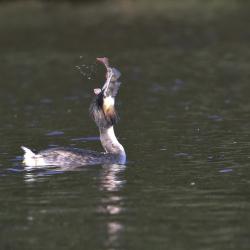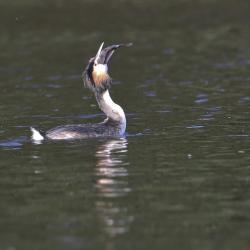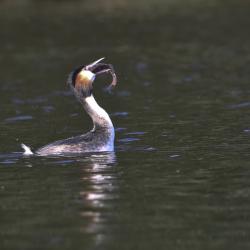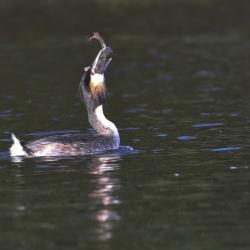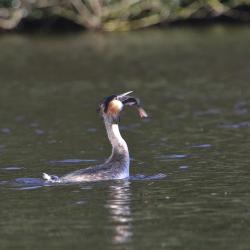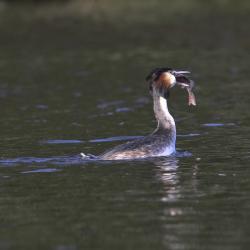The Great Crested Grebe is the largest member of the grebe family outside of North and South America. It is noted for its distinctive head and neck decoration, and elaborate mating displays.
Great Crested Grebe’s spend most of their time on water. This is because their legs are so far back on their bodies, it is difficult for them to walk on dry land. This is also why they have a tendency to dive under water to escape danger rather than flying away. If they are forced to land away from the water, this can be tricky for them.
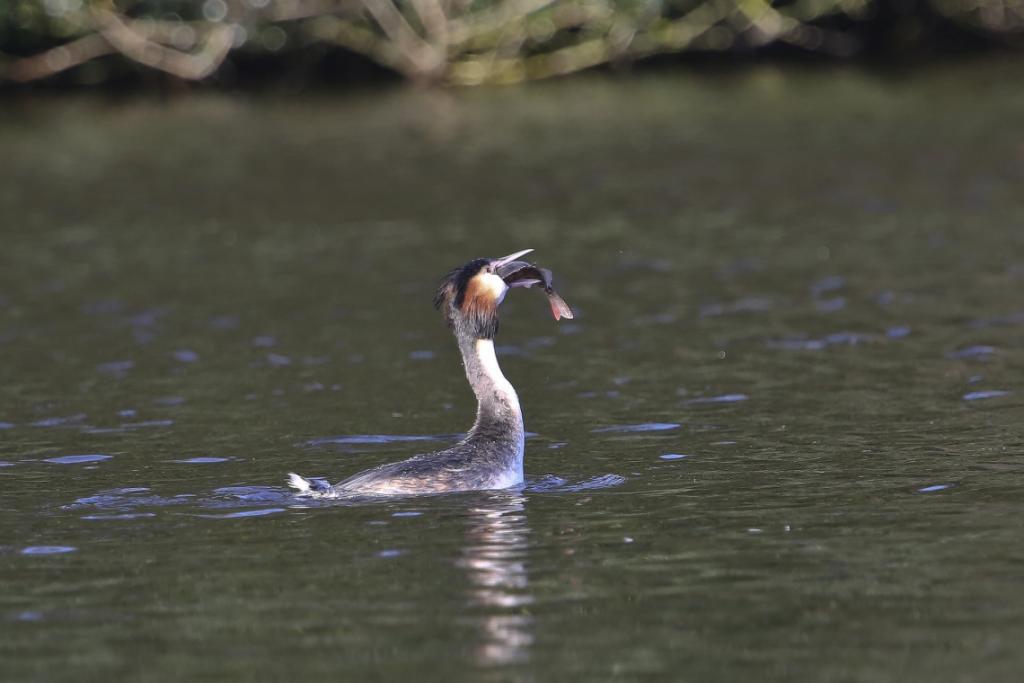 The Great Crested Grebe was almost hunted to extinction in the 19th Century. The unique head and neck decorations made it a target for poachers, who wanted the feathers for use in decorating various items of clothing. This became such a problem the RSPB was set up to protect the species from dying out. At one stage could have been as few as 100 adult birds remaining in the UK, fortunately this number has now increased to over 20000.
The Great Crested Grebe was almost hunted to extinction in the 19th Century. The unique head and neck decorations made it a target for poachers, who wanted the feathers for use in decorating various items of clothing. This became such a problem the RSPB was set up to protect the species from dying out. At one stage could have been as few as 100 adult birds remaining in the UK, fortunately this number has now increased to over 20000.
Where to find the Great Crested Grebe
The Great Crested Grebe’s preferred habitat is within areas of vegetation around freshwater lakes and reservoirs. It will also move nearer to coastal areas in the winter. This is due to its diet, which consists of mainly fish. This means for the purpose of conserving energy before and after hunting, it will not stray far from its primary source of food. While the preferred diet is fish. The birds have also been known to eat insects, and occasionally Grebe’s have been spotted even eating small frogs.
The pictures below of a Great Crested Grebe catching and eating a fish were taken on the 14th of February 2016, at Redesmere Lake in Cheshire. Using a Canon 5D Mark III, with a 300mm 2.8L lens and 2xL converter.


